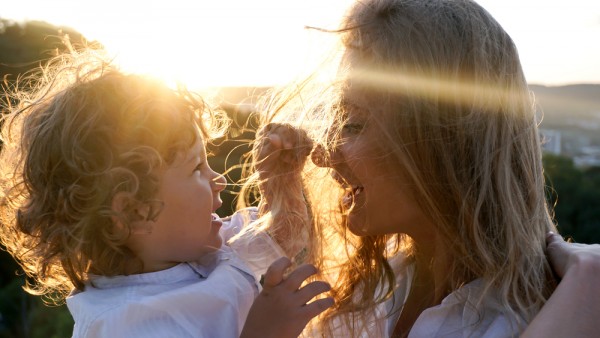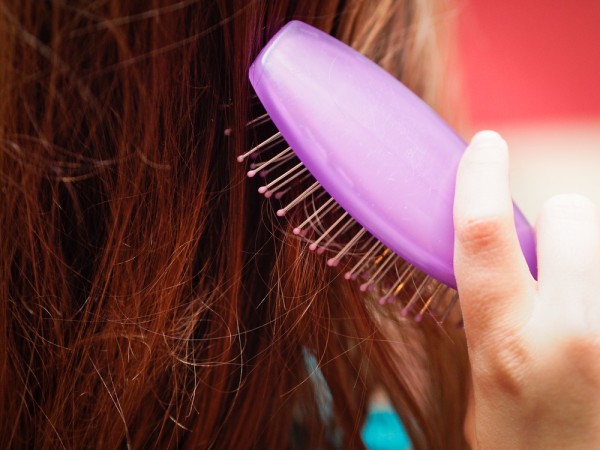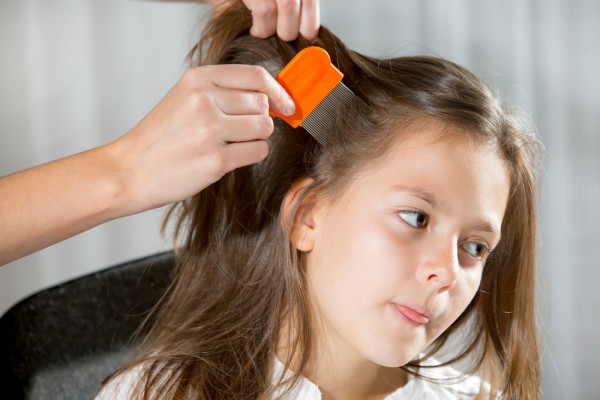Motherhood is a joy.
It is packed with precious moments, rewarding smiles, their first tooth, their first steps...their first outbreak of head lice.
Wait, what?
Dealing with head lice is part of the much less glamorous side of parenting. It is about as rewarding as the vomiting bug, mastitis and cracked nipples.
The issue of head lice is a double whammy of awfulness:
(a) It is a totally gross concept
(b) It is a real pain to have to deal with physically - the constant combing, the scalp searching and the removal of the little eggs left behind.
(*scratches head frantically)
And because many of us don't carry out the ENTIRE process for getting rid of lice, the problem continues to spread from child to child which is especially tiresome for parents of kids in primary school.
Many parents tell us that it is extremely hard to eradicate head lice from a classroom - so we have put together a definitive guide on how to correctly banish head lice from your child and prevent it getting back into the classroom again.
1. Prevention
We all have a responsibility to keep lice out of the classroom.
Your child's hair should be tied up (for girls) and put on a hairband. Better still, get a preventative spray (they are usually available in your pharmacy) or make your own using essential oils (5 drops to lavender, five drops eucalyptus, five drops of rosemary oil, 5 drops of tea tree oil and 5 drops of peppermint oil)
Pop it into a water spraying bottle with 8 ounces of water and spray every morning before school. This should be done every school day if you want to keep those pesky lice at bay.
Teach your children not to wear each other's hats, and because all the coats are usually hung up in a row together, give your child's hood or collar a spray as an extra deterrent.
2. What to look out for
In an ideal world, we would all check our children's hair every time we dry it after their bath or shower. This would mean the nits (little eggs) would be found before they hatch into the dreaded lice (the insect) and it is much easier to treat. A handy way of doing this is to set the hair-dryer to cool and blow it towards your child's scalp so it parts the hair and search around the base of your child's neck and above their ears where it is warmest and nicer for lice to hide.
Head lice cannot fly, jump or swim. They are spread by head-to-head contact and climb from the hair of an infected person to the hair of someone else. Once your child starts scratching it is a signal that the nits have hatched. Make sure to invest in a dedicated lice comb which is available from your pharmacy. The ones that come with the treatment bottle tend to have the teeth of the comb too far apart to be as effective.
3. How to find those pesky lice if you suspect an outbreak or get a note from your school.
Wash your child's hair and cover in conditioner - comb through normally to stop tangles.
Switch to your lice detection comb.
Make sure the teeth of the comb slot into the hair at the roots, touching the scalp - sweep it down through the hair right to the ends and check for any lice. Section the hair and brush each section at least six times. Wipe anything you find on a dry tissue.
Rince the conditioner and repeat it with the wet hair. It is time-consuming but worth it. If you get into the habit of doing this after bathtime while the children are watching a cartoon you will thank us.
3. Ok, we have it - now what do we do? (*shrieks manically)
Banish the thought of shaving your head and the heads of your entire family. Instead, let your child's teacher know discreetly so the rest of the parents can be informed and ready to take action - this is a community effort, remember?
Every parent needs to play their part. Get a lice treatment shampoo at your pharmacy (or better still have it in your bathroom press ready to go)
Most treatment shampoos recommend that you should leave the solution in the hair for five minutes, then they recommend combing through the hair in sections with your special nit comb, removing the dead lice and eggs. And then repeat the process 7 days later.
They suggest checking for baby lice hatching from eggs three to five days after you use a product, and again 10 to 12 days afterwards.
Unfortunately, some lice have developed resistance to the chemicals in the treatment.
If you want to be absolutely positive you have gotten rid of the little critters, you really should surrender to the fact that you are looking at a month of checking and combing your child's hair out every day.
4. Why do you have to comb and check for so long? I thought you only do it when you find the lice and again 7 days later?
The life cycle of an egg is 21 days so you want to make sure you get every last one throughout that time before they hatch and start laying more eggs.
Comb, comb and comb again.
Check it under the natural light which shows up the eggs more clearly as opposed to regular room lighting.
5. Anything else? (*sobs)
Wash bedsheets, teddies and hats to make sure you get rid of any hair follicles that may have an egg attached. The treatment does kill the live lice but doesn't necessarily remove the egg from the shaft.
This may sound excessive but remember - this is our ultimate guide to ensuring your child doesn't get it again. That is why it is so important that every parent is as meticulous as you. Regular combing in the evenings will keep them at bay - a nice glass of wine helps too.
Good luck Mamas!
Share this with anyone else you think would be interested in knowing more about this.
We would also love to hear your stories about how you managed it or if you have any more tips and tricks to share!







